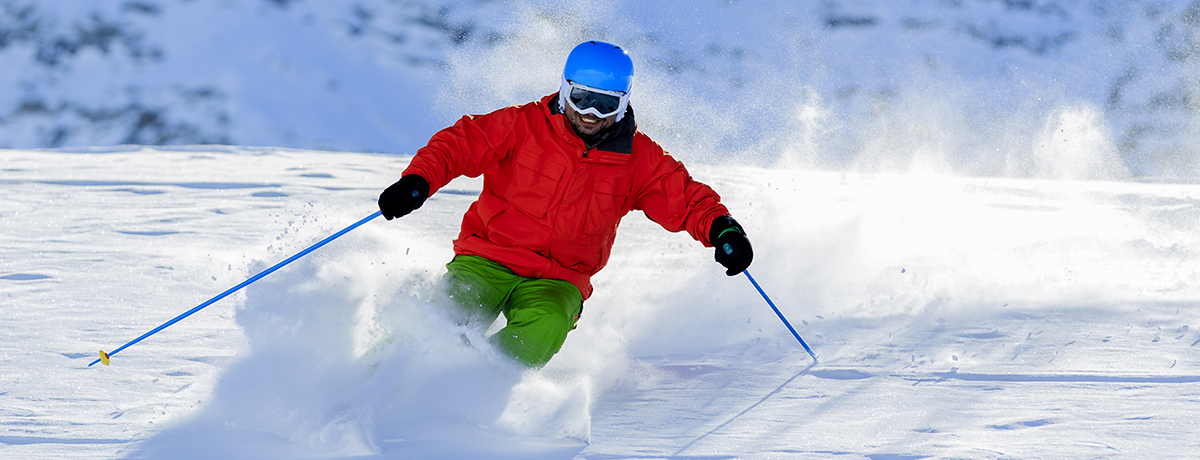How to Prevent Ski Injuries on the Slopes

Skiing image via shutterstock
An ACL injury is one of the most commonly heard medical terms in sports, and it can stop a promising career right in its tracks. Renowned skier (and tabloid darling) Lindsey Vonn recently announced that she won’t be participating in the Sochi Olympics due to complications stemming from an ACL injury. She won a gold and a bronze medal at the 2010 Olympic Games.
ACL stands for anterior cruciate ligament, and injury occurs when there is over-stretching or tearing of the knee. A tear may be partial or complete, but as any sports fan knows, hearing “torn ACL” in any form is usually very bad news. But it’s not just the pros that can be devastated by this kind of injury; even casual weekend warriors need to be careful. That’s why we asked Dr. Bojan Zoric, an active member of the U.S. Ski and Snowboard Association physician pool and orthopedic surgeon specializing in sports medicine at Beverly Hospital, to give us a few easy steps to prevent skiing and snowboarding injuries this winter.
1. Do conditioning exercises before you hit the slopes
“Priming your muscles before hitting the slopes will prepare you for skiing’s intense quad and hamstring workout. Be sure to take some time at the start of your day and after breaks to warm your muscles by walking and stretching. Do windmills with your arms, swing your legs back and forth, and do abdominal twists to loosen up,” Zoric says. “In addition to leg conditioning, cardio and core muscle workouts are very important. Higher altitudes can cause you to become light-headed because your body has to work harder to maintain oxygen levels, so it’s important to stay in shape before heading up the mountain. Once on the slopes, start with a few easy, gentle runs to get yourself physically and mentally prepared for more difficult courses.”
2. Check your equipment regularly
“Poorly functioning or improperly adjusted equipment can cause injuries. Bindings that are too loose or too tight, as well as equipment that is improperly sized or used on the wrong terrain, can lead to serious harm. Use your own equipment if possible, as borrowed or rented gear may not fit properly,” he says. “Boots should fit snugly without your ankle moving around inside. Longer skis are more difficult to turn on, and bindings set too high for your ability are more likely to cause injury. The staff should take time to fit your equipment properly. If they don’t ask you questions about your height, weight or ability, then you should think about going somewhere else to buy or rent your gear.”
3. Wear protective equipment
“Protective equipment like helmets can prevent disastrous and even fatal accidents. A study in the Journal of American the American Medical Association found that the helmets reduced the risk of head injury by 60 percent, head contusions and fractures by 53 percent, and severe head injury by 57 percent,” Zoric says. “Helmets are sport-specific, so do not wear a bike helmet on the slopes. Wearing wrist guards and elbow and knee pads are also a good idea, especially for skiers or snowboarders who frequent terrain parks.”
4. Get proper instruction
“If you haven’t skied or snowboarded before, taking a lesson before getting on the slopes is an important step toward preventing injuries. Improving your technique lowers your chance of suffering joint stresses,” he says. “Taking lessons can prepare and teach skiers to detect dangerous situations on the mountain and how to avoid them. Instructors can also advise beginners when they are ready to progress to more advanced levels of terrain.”
5. Take breaks and stay hydrated
“Physicians often hear our patients say they hurt themselves on the last run of the day. Accidents happen when skiers and snowboarders are tired and fatigued,” Zoric says. “At the end of the day, when skiers are most tired, the slopes may be icy and crowded, and there may be bare patches in the snow—a perfect recipe for a fall. When you feel tired, take a break.”


